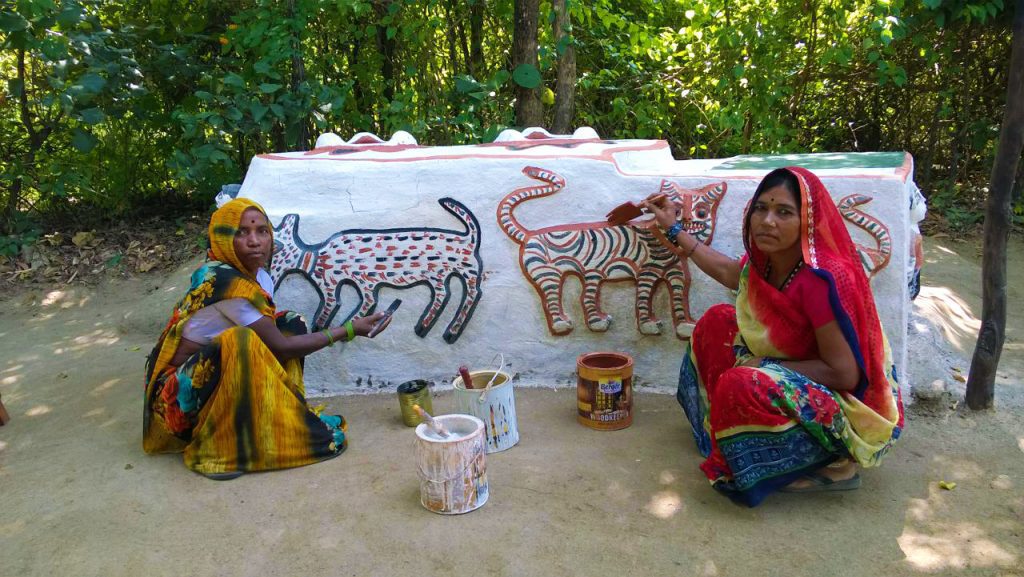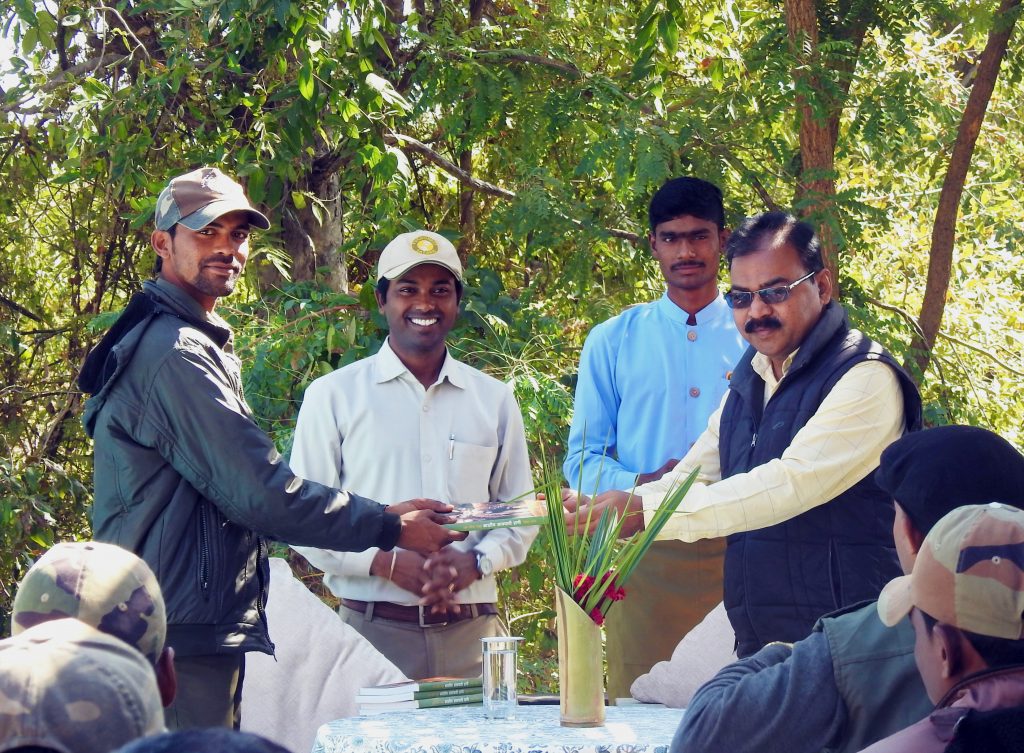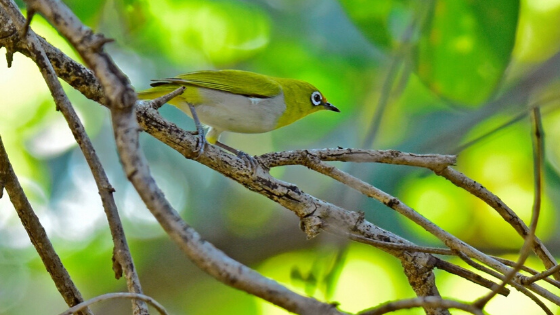
Birding or Bird watching translates to observing birds, understanding them, and being able to identify them. It’s a wonderful pastime. Even when it comes to India birding tours, people are asking wildlife travel companies in India for it, as watching beautiful birds in their natural habitat is truly one of the best experiences of life.
The study of birds and their habitat with scientific approach is known as “Ornithology“. It’s an inexpensive hobby which can be started and enjoyed outdoor and great for any age group..
Birding can be done with naked eyes, but best done using binoculars (recommended 8X 42 ) so as to observe the birds closely. Birds are not only a visual treat, with their gorgeous colours, but are also music to our ears with their melodious calls. Some research also confirms birding helps reduce stress, lowers depression and anxiety, while increasing mental fitness.
The term Bird watching is said to have originated in 1901 and was the title of the book, “Bird Watching” by Edmund Selous, 1901.
Dr Salim Ali known as the Bird man of India was an Indian Ornithologist and Naturalist. He was the first man from India who wrote several books on birds and conducted systematic bird surveys. “The Book of Indian Birds” by Salim Ali is a great book for learning about Indian Birds.
Pench Tree Lodge is set on 40 acres of land having different habitats with grassland, wooded areas and streams which offers good opportunity to enjoy more than fifty species of avian friends. You can enjoy the birds, sitting in the balcony of a Treehouse or from the verandah of your cottage.
Our in-house naturalists, most of whom have started their career with birding are also at your service, and can help in identifying the different birds.
Here are some of the common, but interesting birds to begin with around the lodge:
Scaly Breasted Munia
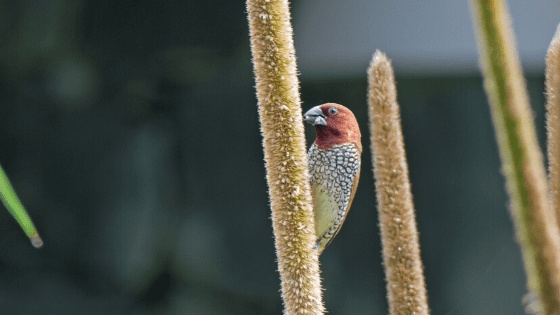
A small attractive bird found in grasslands, open areas and agriculture fields. Chocolate brown with an underside of white and breast having scale like patterns for which the species is named as Scaly Breasted Munia. Best seen near our lodge’s reception, after monsoon. They can be found busy collecting green grass blades as nesting material.
Plum Headed Parakeet
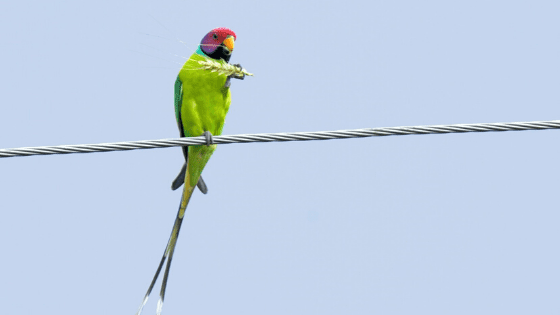
Native to Indian sub-continent, this bird get its name by the head which resembles a Plum fruit. These birds are mostly seen in flocks with males having dark pink head and females with grey head. They fly fast with sudden twists in air, while making unique sound “theuwe – theuwe”.
Jungle Owlet
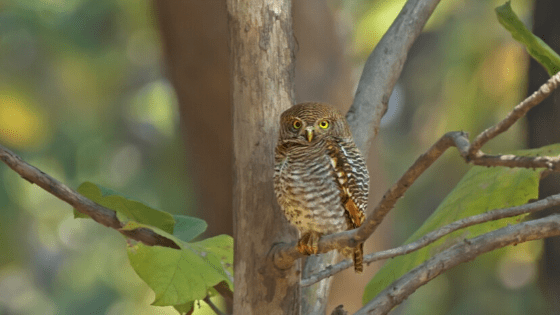
Sometimes while scanning through the trees you might find round, yellow eyes looking back at you, and if you observe carefully, you might find the the Jungle Owlet staring right back at you! The bars on its body with a mix of white create a great camouflage for this bird in the woods. Jungle Owlets generally crepuscular owls mostly active an hour or so before dusk, and a similar time before sunrise, but also moves about during the night. hunting insects, locust, grasshoppers, lizards and small rodents.
Coppersmith Barbet
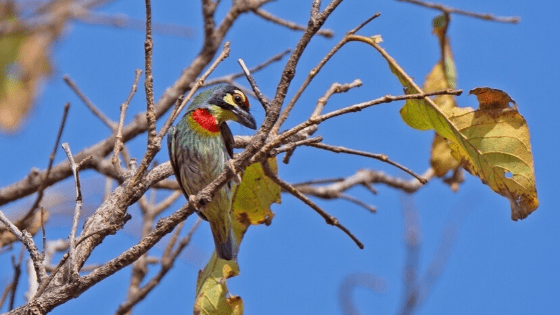
Have yo heard the “tuk….. tuk……” sound in the trees around you, resembling the hammering of a coppersmith on his vessel? Well, that’s the Coppersmith barbet for you, which therefore also gets it’s name. Commonly found in most parts of India, even in the cities. Frugivorous bird which mostly feeds on fruits of ficus trees ( eg. Peepal, Banayan etc. ) and one that plays a role in seed dispersal.
Yellow Footed Green Pigeon
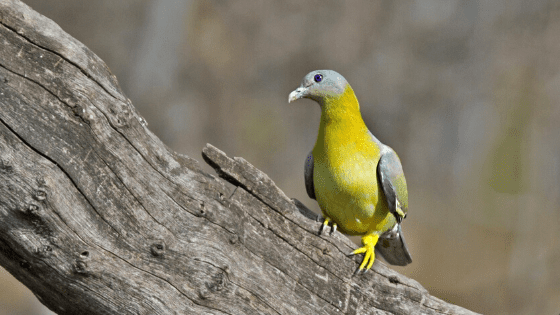
Another frugivorous (fruit eating) bird, Yellow Footed Green Pigeon, gets its name again from its yellow legs. Hard to spot them in dense canopy of trees but can be located by their melodious calls. It is the state bird of Maharashtra and locally known as Hariyal.
Black Winged Kite or Black Shouldered Kite
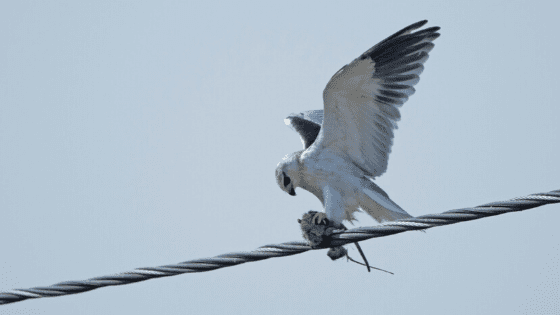
This stunning raptor prefers open grassland or agriculture fields. It hovers in the air, looking down for its prey, gliding with the wind and again hovering back. If one observes this bird closely while its hovering one can see the whole body moving but the head stays absolutely stabkilized at one place. Black Shouldered kite are a farmer’s friend, as its preferred diet is rodents.
Lesser Golden-Backed Woodpecker or Black-Rumped Flameback
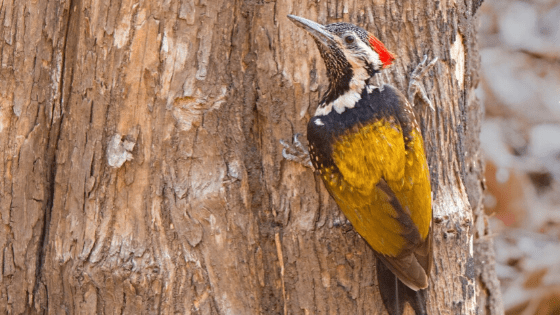
Lesser Golden-Backed Woodpeckers are forest doctors which keep a check on trees by knocking them. The knocking on the tree, frightens the larvae ( which damages the tree from inside) and it tries to escape. The sensitive ears of the bird catches the movement, as it start making the hole at the right place. There after using its long sticky tongue the bird gets it prized meal
The holes made by the woodpeckers are used by other birds to build nests. The skull of the woodpecker have a remarkable suspension system which can absorb the forceful shock during pecking, thereby aborting the chances of getting a brain haemorrhage. Mostly found in pairs.
Green Bee-Eater
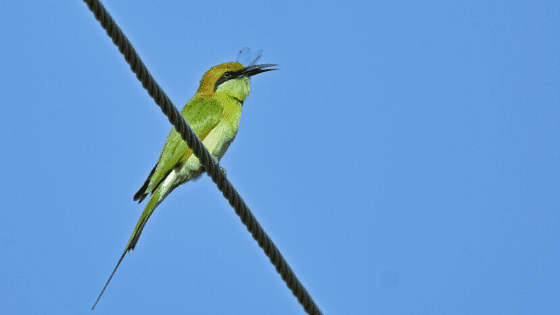
This is a common bird found in Asia and Africa, and bees are it’s favourite meal. Found in small groups, hunting bees, dragonflies, butterflies etc. in mid-air, and swooping back to their perch. Lot of guest get attracted to the vibrant green shade of this perky bird.
Black Napped Monarch/Black Naped Blue Fly Catcher
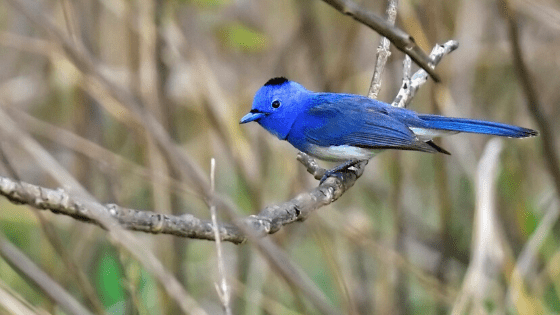
Whenever I observe this bird, I feel like it has taken a dip in an ink bottle. It like a flycatcher, hunting insects in the air. The male is blue with distinctive black patch on its head. Females are a dull olive brown, lacking the blue markings on the head. Their breeding season is from May to July, and the nest is cup shaped and placed between the twigs.
Happy Birding!
Contributed by: Gaurav Dhotre, Naturalist, Pench Tree Lodge
Edited By: Natasha Sinha

